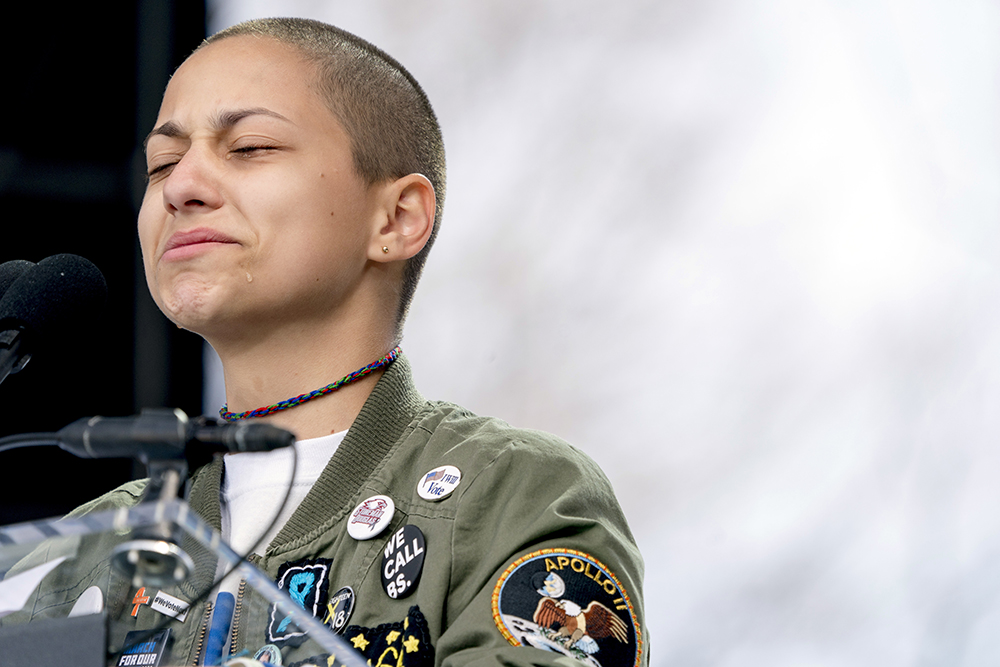(RNS) — Early in seminary, I had a startling realization: I hadn’t cried in years. While this isn’t particularly unusual — sadly, it’s all too normative — it struck me as serious deficiency for an aspiring clergyperson. I felt that I was missing out on a core part of what it meant to be human. I worried that this failing would hinder my ability to provide meaningful care.
So I adopted crying as a daily spiritual practice, spending a few minutes of each day in tears. It did help me offer better pastoral care as I had hoped, but it was more than that. I had been unprepared for how intentional weeping would recalibrate my entire emotional baseline and kick off a decade of frequent tears that changed how I relate to other people and the world.
At the beginning of this spiritual experiment, I was so divorced from my feelings that I had to engage extreme stimuli to provoke tears. I would imagine my parents dying and what I would say to them on their deathbeds. I watched videos of refugees who had fled their homelands talking about the lives they had abandoned and their fragile hope for the future. If I sat in that overwhelming emotion for long enough, my eyes would swell and I could give myself over to weeping.
ARCHIVE: Obama cried about guns. Good for him.
But over several months, my threshold dropped. It became easier and easier to make tears come. Soon, all I needed to do was watch a video of a dog being reunited with its owner or sit through a particularly tender moment in church and I’d find tears running down my cheeks.
Eventually, I gave up the intentional daily practice altogether, as I now cried several times a week without any deliberate effort. After a relatively brief period of time, I was just someone who cried easily.
Ever since, I’ve been fascinated by the relationship between tears and underlying emotional temperament — and the power crying has to not only disrupt our own spiritual calcification but to prophetically disrupt the world.

“Jesus Wept” by James Tissot, circa 1890. Image courtesy of the Brooklyn Museum/Creative Commons
Our religious texts are filled with crying. Before he confronts his brothers, Joseph flees the room to find a place to weep. The Prophet Muhammad cries at the bedside of his son Ibrahim as he lies dying. Arjuna is desolate and sobbing at the opening of Bhagavad Gita, before Krishna makes meaning of his tears. Jesus famously weeps beside Lazarus’ body, before the first resurrection takes place. Again and again, a pattern arises: Tears precede moments of great transformation.
Research suggests this isn’t incidental: The act of crying may change underlying brain chemistry. I recently spoke with William H. Frey, author of the 1985 book ”Crying: The Mystery of Tears,” and perhaps the world’s foremost expert on the physiology of crying. Frey has collected tears from people as they cried at sad movies, and compared their chemical composition to tears from the same subjects brought on by an onion being pulverized in an open blender.
“What we found,” Frey said, is that “emotional tears really are different from other kinds of tears. They are not only unique to humans, they are a unique kind of tear.”
Frey and his researchers found that tears of emotion contain reliably and significantly higher levels of adrenocorticotropic hormone, a neurotransmitter released in response to stress, as well as elevated levels of endorphins.
Frey hypothesized that these proteins were not merely a byproduct of tears, but that tears allow the body to reduce the levels of cortisol in the brain. Put simply, he said: “Emotional crying alleviates stress. And one of the things we know is that unalleviated emotional stress can damage the brain.”

Rabbi Michael Adam Latz. Photo via Twitter
Frey’s research suggests that when we let social conditioning hinder our capacity to cry, we aren’t just missing out on a piece of our humanity; we may be damaging our brains in the process. It also helps explain why it became easier for me to cry regularly: It’s only a culturally imposed stoicism that prevents us all from crying more readily. The shift in brain chemistry that emotional tears produce may be the reason crying so often precedes personal and social transformation.
Rabbi Michael Adam Latz, now senior rabbi at Shir Tikvah in Minneapolis, wrote his thesis for Hebrew Union College in 2000 on the power of crying, and he offers spiritual testimony that dovetails with Frey’s scientific analysis. “What I find in my rabbinic practice,” said Latz, “is that people who do not weep do not grieve well. Folks who do not cry in hard moments have a substantially harder time dealing with their grief.”
Latz believes that the power of tears transcends our own brain chemistry — it fertilizes social transformation as well. “When we really cry, it clouds your vision until it clarifies it,” he notes. “It makes it all blurry, until you realize ‘Oh, I see this, I feel this, I know this in a different way.’” And that embodied knowing facilitates our connection to other people. “Weeping cleanses the body and soul,” he concludes, “and creates the opening for whatever comes next.”
In her essay “Call the Wailing Women to Weep for Us,” the Rev. Wil Gafney wrote, “I don’t know what to do or what I can do to keep the police from shooting, strangling, suffocating and now, severing our spines in vehicular lynchings. I’m tired of praying.”
Instead of formal prayer, she offers wailing as an injunction that can break through cultural apathy, to create change amid a society sinfully accustomed to brutality and death. “We need to weep with rage and determination,” she wrote. “Death is in the house.”
Children weep easily, shattering our ability to pretend that no one is hurting. This naturally makes adults uncomfortable, simply because tears are destabilizing, and we shame kids into “growing” out of their tears. Given Frey’s and Latz’s work, this is emotional abuse. We should instead foster and praise weeping as a liberating spiritual act. Doing so might build a world where it wasn’t so frequently necessary.

Emma Gonzalez, a survivor of the mass shooting at Marjory Stoneman Douglas High School in Parkland, Florida, closes her eyes and cries as she stands silently at the podium and times the amount of time it took the Parkland shooter to go on his killing spree, during the “March for Our Lives” rally in support of gun control in Washington, Saturday, March 24, 2018. (AP Photo/Andrew Harnik)
At the 2018 March for Our Lives, the activist and Parkland, Florida, shooting survivor Emma Gonzalez took the stage and stood silently for six minutes and 20 seconds, tears streaming down her face. It was as radical and prophetic an act as any of the fiery speeches that preceded her. I found myself weeping as I watched her, along with the crowd: In that moment we were all connected.
Gonzalez’s tears didn’t change everything; years later we’re still waiting for meaningful gun legislation. But those tears opened a possibility for something new to emerge. They invited us to transcend the death we’ve made peace with. They invite us still. If we’re brave enough to embrace disciplined wailing, perhaps we can be transformed.
(The Rev. Benjamin Perry is the minister of outreach and media strategy at Middle Collegiate Church. You can follow him on Twitter @FaithfullyBP. The views expressed in this commentary do not necessarily reflect those of Religion News Service.)





